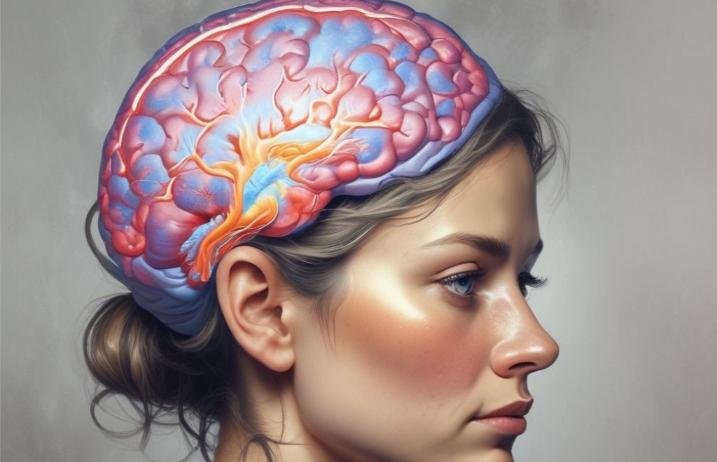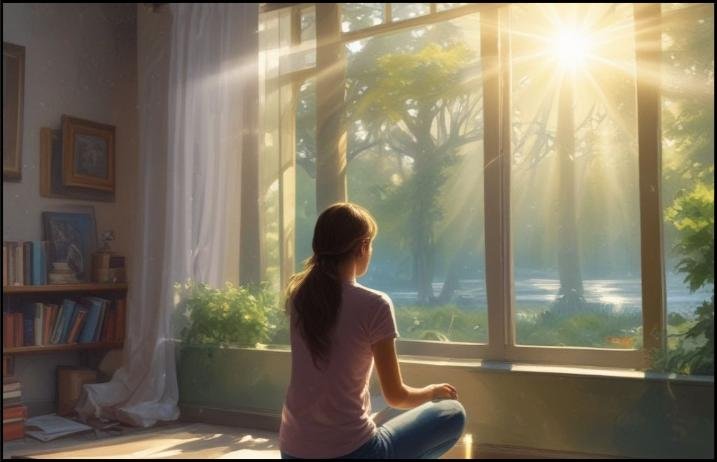Springtime has seen changes in when the Sun rises and sets most likely. But have you also found changes in your attitude?
For some time now, we have known that our well-being depends on light. Many of us get more cheerful when spring arrives.
For others, however, significant changes in light—such as those brought about at the beginning of spring—can be challenging. And many find great difficulty with many brilliant lights at night. The following is happening.
An old melody of mood and light.
According to a previous piece in our series, light shining on the rear of the eye communicates the master clock of the circadian system and the brain. This clock regulates our every day (circadian) cycles.

“Clock genes” also govern circadian rhythms. These genes affect the timing of when many other genes turn on and off during the 24-hour, light-dark cycle.
But how is this all linked with our mood and mental health?
Circadian rhythms can be interrupted. This can happen if there are difficulties with how the body clock develops or functions, or if someone is consistently exposed to strong light at night.
When circadian disruption happens, it increases the risk of certain mental diseases. These include bipolar disorder and atypical depression (a type of depression when someone is particularly drowsy and has problems with their energy and metabolism).
Light on the brain
Light may also impact circuits in the brain that control mood, as animal studies reveal.
There’s evidence this happens in people. A brain-imaging study demonstrated exposure to strong light in the daytime while within the scanner affected the activity of a brain region linked in mood and alertness.

Another brain-imaging study discovered a link between daily exposure to sunlight and how the neurotransmitter (or chemical messenger) serotonin interacts with receptors in the brain. We detect changes in serotonin binding in numerous psychiatric illnesses, including depression.
What happens when the seasons change?
Light can also alter mood and mental health as the seasons change. During autumn and winter, symptoms such as low mood and weariness can arise. But often, once spring and summer come around, these symptoms fade away. This is called “seasonality” or, when severe, “seasonal affective disorder”.

What is less generally recognized is that for other people, the change to spring and summer (when there is more light) can also come with a change in mood and mental health. Some people notice increases in energy and the drive to be active. This is positive for some but can be very destabilising for others. This too is an example of seasonality.
Most people aren’t really seasonal. But for those who are, seasonality has a hereditary component. Relatives of people with seasonal affective disorder are more likely to also experience seasonality.
Seasonality is also more common in illnesses such as bipolar disorder. For many persons with such disorders, the shift into shorter day lengths during winter might induce a melancholy episode.
Counterintuitively, the longer day lengths in spring and summer can also destabilize persons with bipolar disorder into a “activated” state where energy and activity are in overdrive, and symptoms are difficult to manage. So, seasonality can be problematic.
Alexis Hutcheon, who experiences seasonality and helped develop this piece, told us:
So what’s going on in the brain?
One idea for what’s going on in the brain when mental health fluctuates with the change in seasons relates to the neurotransmitters serotonin and dopamine.
Serotonin helps regulate mood and is the target of several antidepressants. There is some evidence of seasonal fluctuations in serotonin levels, presumably being lower in winter.

Dopamine is a neurotransmitter involved in reward, motivation, and movement, and is also a target of several antidepressants. Levels of dopamine may also alter with the seasons.
But the neuroscience of seasonality is an emerging subject and more research is needed to determine what’s going on in the brain.
How about bright light at night?
We know exposure to intense light at night (for instance, if someone is up all night) can alter someone’s circadian rhythms.
This form of circadian rhythm abnormality is related to increased rates of symptoms including self-harm, depression and anxiety symptoms, and worse well-being. It is also connected with greater rates of mental diseases, such as major depression, bipolar disorder, psychotic disorders, and post-traumatic stress disorder (or PTSD).
Why is this? Bright light at night confuses and destabilizes the body clock. It affects the rhythmic regulation of mood, cognition, hunger, metabolism, and many other mental processes.
But humans range considerably in their sensitivity to light. While still a theory, persons who are most sensitive to light may be the most prone to body clock disturbances induced by intense light at night, which subsequently leads to a higher risk of mental health disorders.
Where to from here?
Learning about light will help people better manage their mental health concerns.
By helping people to better align their lives to the light-dark cycle (to stabilize their biological clock) we may also help prevent disorders such as depression and bipolar disorder from forming in the first place.

Healthy light habits – avoiding light at night and seeking light during the day – are excellent for everyone. But they might be especially helpful for persons at risk of mental health problems. These include persons with a family history of mental health difficulties or people who are night owls (late sleepers and late risers), who are more at risk of body clock abnormalities.
To sum up, light substantially impacts our mental health, mood, and biological rhythms. Seasonal changes and exposure to artificial light at night can alter our body’s internal clock, hurting well-being and raising the risk of mood disorders like depression and bipolar disorder. As research progresses, knowing light’s influence on neurotransmitters and circadian rhythms offers insight into regulating these consequences. Healthy light habits—embracing natural light during the day and reducing exposure to strong light at night—can help mental stability, particularly for persons with a sensitivity to light or a family history of mood disorders.











